Refer to the exhibit
A.
Option A
B.
Option B
C.
Option C
D.
Option D
Option A
Pick the component with which DataWeave is tightly integrated.
A. All APIs
B. Mule runtime
C. Exchange
D. Flow Designer
Explanation:
Correct answer is Mule runtime
DataWeave is the MuleSoft expression language for accessing and transforming data that
travels through a Mule app. DataWeave is tightly integrated with the Mule runtime engine,
which runs the scripts and expressions in your Mule app.
A Utility.dwl file is located in a Mule project at src/main/resources/modules. The Utility.dwl hie defines afunction named pascalize that reformats strings to pascal case. What is the correct DataWeave to call the pascalize function in a Transform Message component?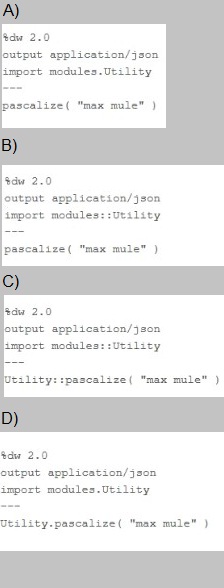
A.
Option A
B.
Option B
C.
Option C
D.
Option D
Option B
Refer to the exhibits.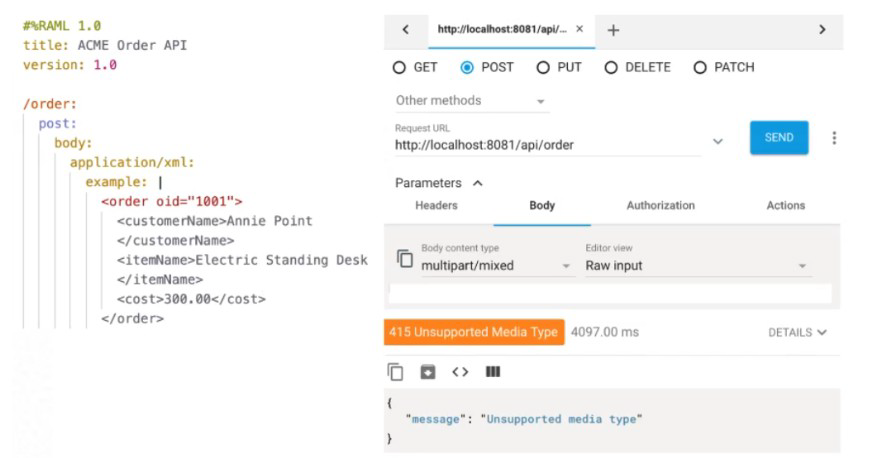
The web client sends a POST request to the ACME Order API with an XML payload. An
error is returned.
What should be changed in the request so that a success response code is returned to the
web client?
A. Set a request header with the name Content-Type to a value of applicatron/octet-stream
B. Set a request header with the name Content-Type to a value of application/xml
C. Set a response header with the name Content-Type to a value of applkation/xml
D. Set a response header with the name Content-Type to a value of application/octetstream
The HTTP 415 Unsupported Media Type client error response code indicates that the
server refuses to accept the request because the payload format is in an unsupported
format. The format problem might be due to the request's indicated Content-Type or
Content-Encoding , or as a result of inspecting the data directly. As per RAML input is
expected in application/xml.
Hence correct answer is Set a request header with the name Content-Type to a
Refer to the exhibits.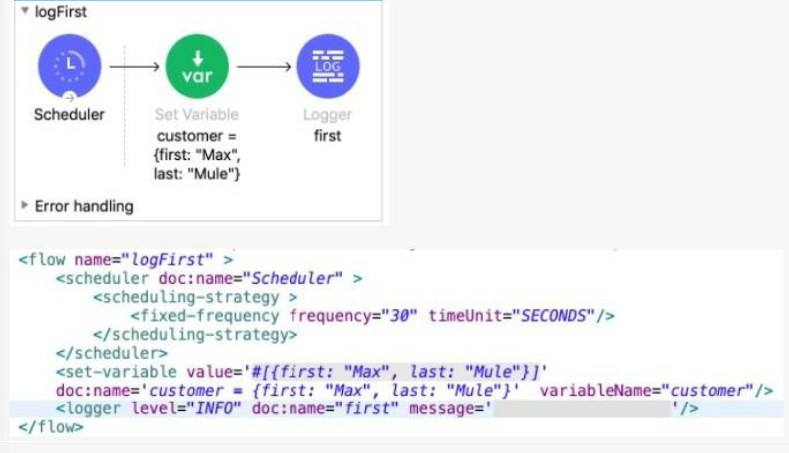
The Set Variable transformer is set with value #[ [ first "Max" last "Mule"} ].
What is a valid DataWeave expression to set as the message attribute of the Logger to
access the value "Max" from the Mule event?
A. vars "customer first"
B. "customer first"
C. customer first
D. vars "customer" "first"
Which Mule component provides a real-time, graphical representation of the APIs and mule applications that are running and discoverable?
A. API Notebook
B. Runtime Manager
C. Anypoint Visualizer
D. API Manager
Explanation:
Correct answer is Anypoint Visualizer
MuleSoft Doc Ref : https://docs.mulesoft.com/visualizer/
Anypoint Visualizer provides a real-time, graphical representation of the APIs, and Mule
applications that are running and discoverable. It also displays third-party systems that are
invoked by a Mule API, proxy, or application within your application network. The data
displayed in the graph is dynamically updated and does not require prior configuration.
Additionally, the data displayed is secure, as only users with the proper permissions can
view the application network graph.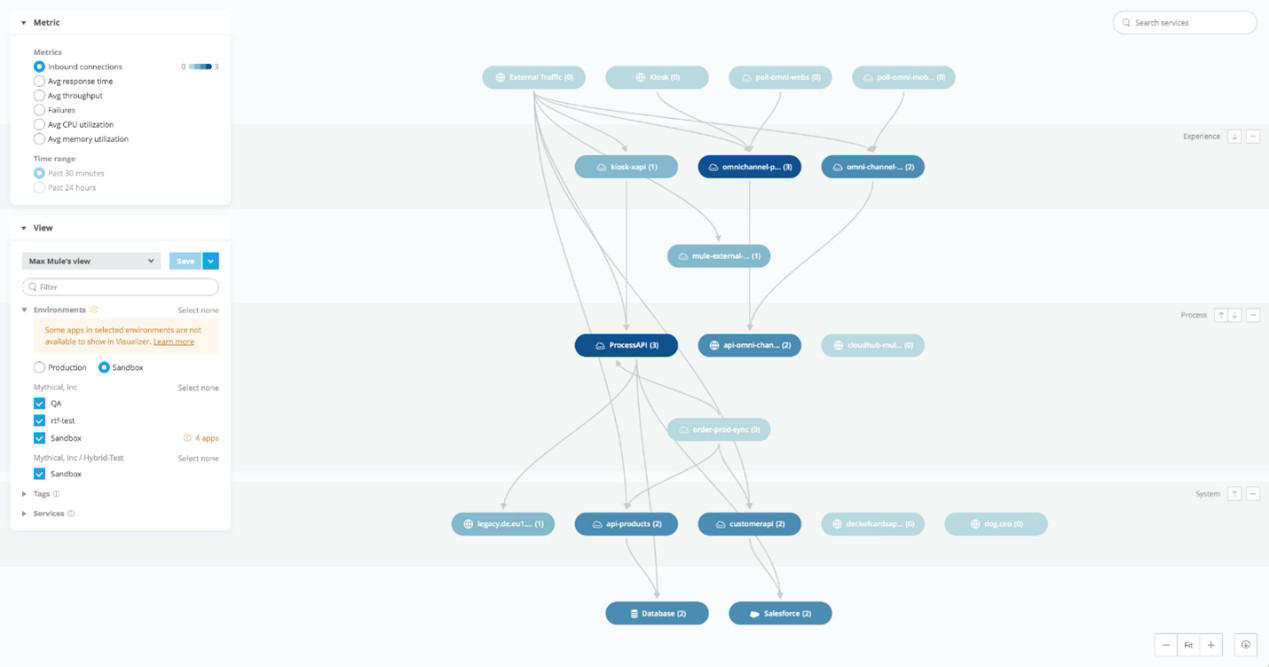
Refer to the exhibits.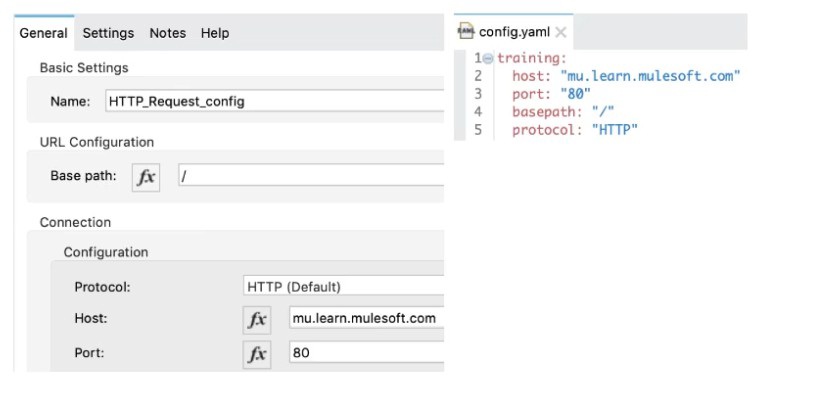
In the requestFlow an HTTP Request operation is configured to send an HTTP request with
an XML payload. The request is sent to the HTTP Listener in the transform Flow.
That flow transforms the incoming payload into JSON format and returns the response to
the HTTP request. The response of the request is storedin a target variable named the
Result.
What is the payload at the Logger component after the HTTP Request?
A.
A non-empty Java object
B.
The original XML payload
C.
null
D.
The returned JSON response
The original XML payload
Which out of below is not an asset?
A. Template
B. Connector
C. Exchange
D. Example
Explanation:
Exchange is the odd man out here. Rest all are type of asset: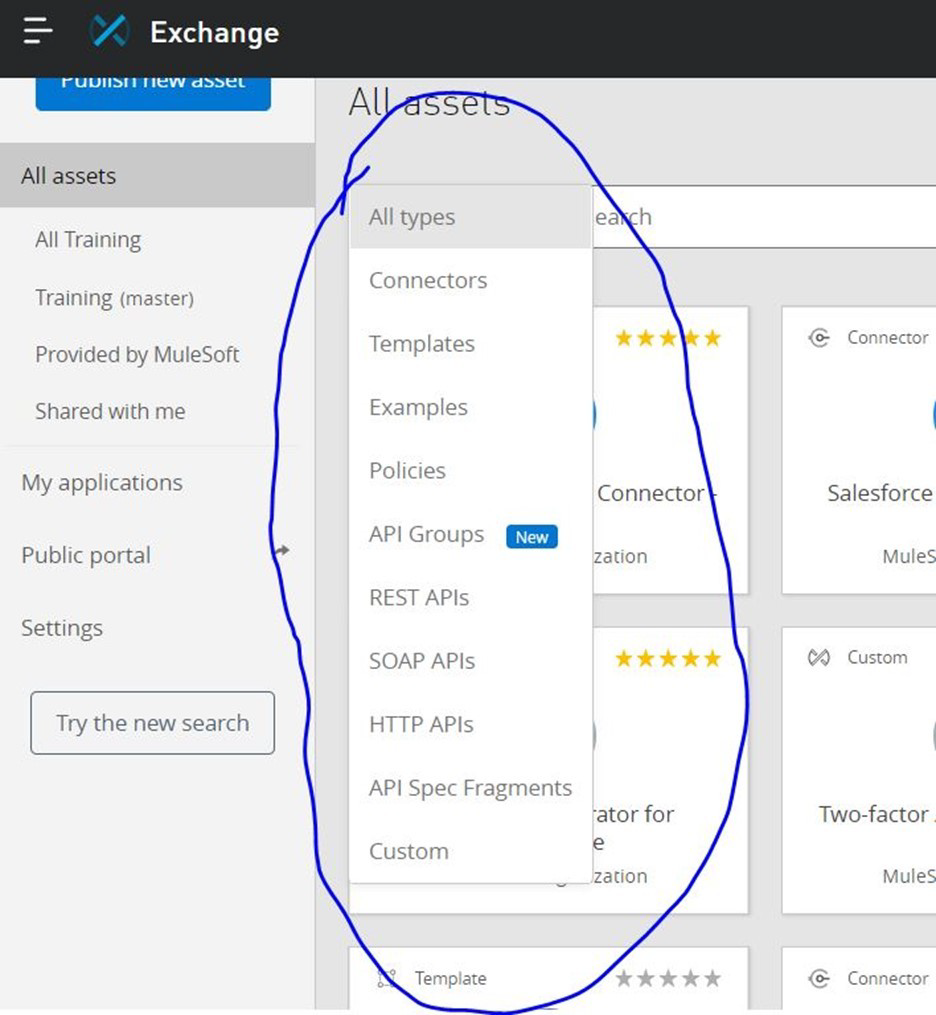
| Page 1 out of 29 Pages |